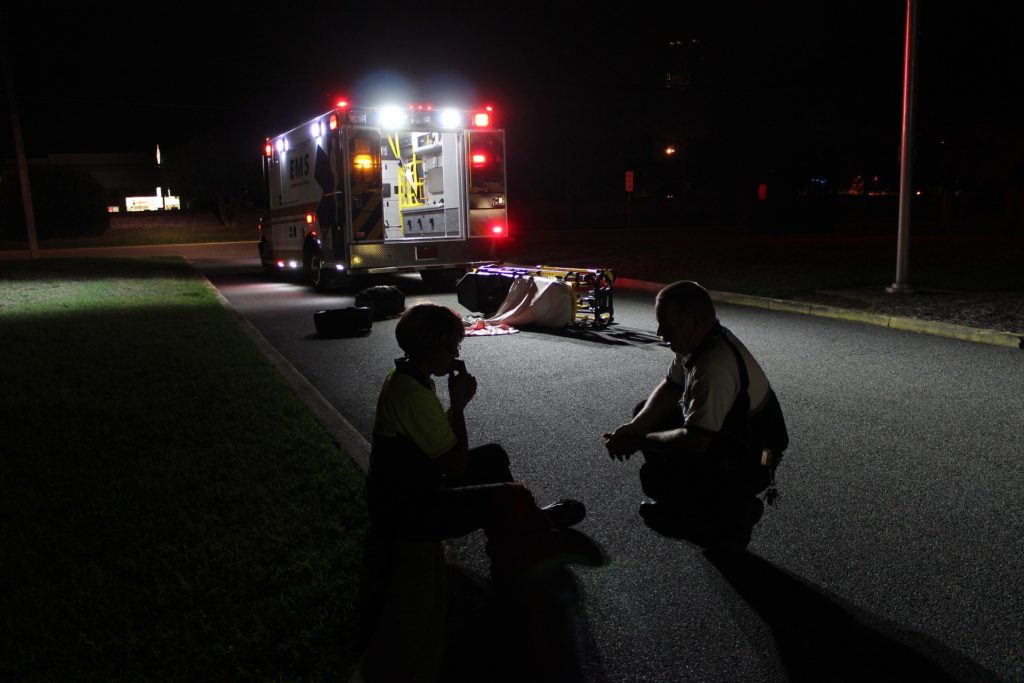
Contributor: Staff member at Timberline Knolls Residential Treatment Center
19.9 million adults needed substance abuse treatment in 2016 [1]. Of that 19.9 million, only 2.1 million received it [1]. That means, 17.7 million adults in the United States need help to overcome their addiction and did not find treatment. So, why didn't these drug abusers find treatment?
Something is wrong
There are widespread issues regarding treatment availability in the mental health community. Of the 44.7 million adults diagnosed with mental illness in 2016, only 19.2 million received mental health services [1].
Sadly, it does not look like it will be changing anytime soon. So, what is getting in the way?
Insurance Coverage to Find Treatment
 Treatment cost is a crucial barrier that few overcome. The same study cited above found that, of those who wanted to receive substance abuse treatment, 26.9% said they did not because it wasn’t covered by their insurance and/or they couldn’t afford the cost/remainder [1].
Treatment cost is a crucial barrier that few overcome. The same study cited above found that, of those who wanted to receive substance abuse treatment, 26.9% said they did not because it wasn’t covered by their insurance and/or they couldn’t afford the cost/remainder [1].
This lack of insurance coverage is problematic for individuals and the nation as a whole. As one article points out, “when people cannot access effective treatment, it can lead to disability, premature death, and a range of other costly health and social consequences [2].”
Proper coverage of addictions treatment results in lives saved but is also more positive and cost-effective for the US, “reduc(ing) health-care costs and decreas(ing) drug-related crimes [2].”
Access to Find Treatment
Another top reason individuals do not receive necessary treatment is due to lack of centers and programs in their area [1]. Treatment centers that use effective, evidence-based treatment strategies need money to do. With the large volume of substance abusers in the US, there is not enough funding to open and run treatment centers in all areas that need them.
Aside from this geographical barrier, studies also find that treatment centers are often under-staffed, resulting in high wait-times and issues with the first contact via phone call in 30% of cases reviewed [3]. The moment a substance abuser chooses to reach out for support is crucial and the more barriers that appear at that moment can increase helplessness and despair, decreasing the likelihood that they will follow through in attempting treatment.
Stigma
Even with the problem of addiction touching more lives than ever, there is a stigma attached to being a substance abuser. Individuals with substance abuse problems are often looked upon negatively, with society mainly judging them to be unintelligent, morally deficient, and lazy.
Stigmatizing substance abusers has caused nothing but harm, with individuals afraid to even admit they have a problem for fear of judgment or dismissal.  Seeking-out and engaging in treatment is a long-shot if individuals don’t even feel safe opening up about their struggle.
Seeking-out and engaging in treatment is a long-shot if individuals don’t even feel safe opening up about their struggle.
Further, all of the issues above stem from this stigma. People don’t care about the problem because it is seen as something someone did to themselves. Politicians don’t create legislation to fight the problem of addiction because constituents aren’t demanding it.
Insurance companies won’t or can’t fund proper treatment due to lack of funding. Treatment centers are never opened, have to close, or don’t have adequate staff and programs because there is no funding.
This is why and how we talk about substance abuse is crucial. It needs to be spoken about in a way that reveals the truth: that it is a mental illness. The face of addiction is not the stigma attached to it.
Showing the true, beautiful, unique, irreplaceable, troubled face of addiction helps people to fear it less and understand it more. The rest will follow.
Resources:
[1] Park-Lee, E., Lipari, R. N., Hedden, S. L., Kroutil, L. A., Porter, J. D. (2017). Receipt of Services for substance use and mental health issues among adults: results from the 2016 national survey on drug use and health. NSDUH Data Review, retrieved on 11 December from https://www.samhsa.gov/data/sites/default/files/NSDUH-DR-FFR2-2016/NSDUH-DR-FFR2-2016.htm.
[2] (2016). The national center on addiction and substance abuse; new report finds that states are ignoring ACA requirements to cover addiction treatment. Insurance Weekly News, 24.
[3] Quanbeck, A. et al. (2013). Examining access to addiction treatment: Scheduling processes and barriers. Journal of Substance Abuse Treatment, 44:3, 343-348.
Thank you to Timberline Knolls for providing this article.
Timberline Knolls is a leading residential treatment center for women and adolescent girls, ages 12 and older, with eating disorders, substance abuse, trauma, mood and co-occurring disorders. Located in suburban Chicago, residents receive excellent clinical care from a highly trained professional staff on a picturesque 43-acre wooded campus. An adult partial hospitalization program (PHP) is also available in nearby Orland Park, Ill., for women to step down or direct admit. For more information on Timberline Knolls Residential Treatment Center, call 630-755-5173. We are also on Facebook – Timberline Knolls, LinkedIn – Timberline Knolls and Twitter – @TimberlineToday.
The opinions and views of our guest contributors are shared to provide a broad perspective of addictions. These are not necessarily the views of Addiction Hope, but an effort to offer a discussion of various issues by different concerned individuals.
We at Addiction Hope understand that addictions result from multiple physical, emotional, environmental, and genetic factors. If you or a loved one are suffering from an addiction, please know that there is hope for you, and seek immediate professional help.
Published on February 28, 2018
Reviewed and Updated by Jacquelyn Ekern, MS, LPC on January 12, 2021
Published on AddictionHope.com
